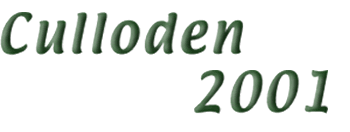
Information,
suggestions, and guidelines for Jacobite participants:
Women's
Clothing
 |
Information,
suggestions, and guidelines for Jacobite participants: Women's
Clothing |
|
WOMEN'S
CLOTHING: Women wore a simple white shift (sometimes called a chemise), covered by striped, solid, tartan, or printed petticoats (skirts). Be very careful with prints as few are historically accurate. Over her shift a women wore a set of stays or jumps (like a corset), covered by (depending upon class) a day jacket, bed gown, casaquin (riding coat), or short gown. A shift is also a nightgown and stays are a foundation garment, both are underwear. Since women did not wear their underwear in public, a sleeved garment is needed over a shift and stays. A modesty cloth, sometimes held closed by a broach, was often worn around the shoulders and over (or tucked in at) the bosom. Aprons were commonly worn over petticoats, sometimes pinned up to cover the front of the jacket or gown as well. Pockets (flat cloth bags on a string) were tied around a women's waist and worn under her petticoats or apron. Women did not wear kilts or belted plaids. The so-called English or French "bodices" are ersatz stays. Although often seen at events, the "bodice" is not an authentic garment as designed, nor was it worn in this time period. A vaguely similar garment might have been used by very old women and nursing mothers as un-boned stays. Even on those women it must be covered by a coat, jacket or gown. Some classes of women wore sack gowns, mantuas or other full gowns. A few women from western isles Clans (looked upon as Gaelic and behind the times) still wrapped their entire ensembles from head to toe in a white tartan arisaid (an outer garment completely covering all other clothes). Appropriate head covering is needed for all but young, unmarried girls. Many kinds of white linen or cotton caps and kertches were worn. Hats or shawls were worn over a cap. Women did not wear men's Highland bonnets. Typical 18th Century women's straw hats were not seen regularly on Highland women, and they did not wear their hair with bangs. There was little time to fard, and make-up was rare outside certain classes or professions. Shoes were either leather or wooden, and usually worn with long stockings and garters. Many women went barefoot or wore open gillies with or without socks. Shoes varied greatly with class. Jewelry was not common to most Highland women. Broaches were usually plain, round, and worn for function (clothing closure and attachment) not fashion. Women did not wear decorative daggers protruding from their bosom. The clothing of upper class women was of better quality, more varied, and the form followed the function (riding habits to ride, bed gowns for your chambers, ball gowns for parties). Girls also wore clothing of a style appropriate to their social status. Clothing was often an indicator of a woman's place in society. Out of her own home or yard a woman kept her stays and shift (underwear) covered all the time. (Do women go to the store today in their underwear? Yes, maybe some do, and what do you think of them?) If you are portraying a prostitute or slattern or hoyden, you might well dress for the part in uncovered stays. Recognize that, by the standard of the day, you will be treated and addressed like the 18th Century woman that you portray. Girls as young as 13 also worked in camp, and all of these guidelines apply to them as well. Parents, please think about how your daughters dress and what message it sends about their avocation. (back to top) |
|
|
|
|
|
Copyright 2001 MacFarlane's Company. Information on this page may be used by non-profit organizations for research and education purposes only, for all other use contact Elliot MacFarlane. Last updated: 01/03/01 For more information on MacFarlane's Company, contact Elliot MacFarlane: emacfarlane@accesstoledo.com |
|